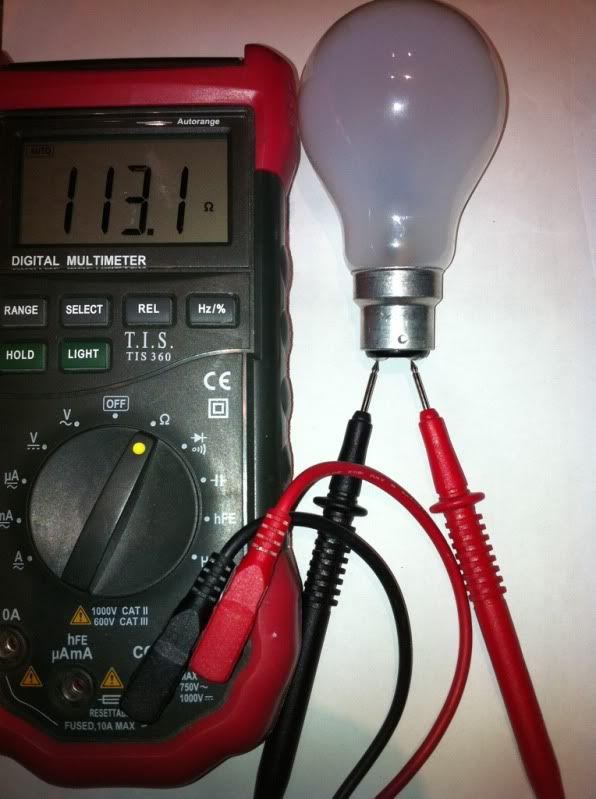Here's one for you then cocky.
Here's a 240V 42W light bulb I've just taken out of the flex drop on my landing.

As you can see it has a resistance of 113.1Ω
Please use ohms law (V = I x R) to tell me what current this 42W bulb will draw at 240V.
Here's a 240V 42W light bulb I've just taken out of the flex drop on my landing.

As you can see it has a resistance of 113.1Ω
Please use ohms law (V = I x R) to tell me what current this 42W bulb will draw at 240V.


